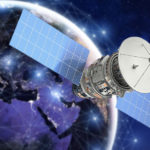If an aircraft takes-off with 10 % less fuel in -comparison to its standard configuration, how its range will vary.
If an aircraft takes-off with 10 % less fuel in -comparison to its standard configuration, how its range will vary.
Let the aircrafts fuel weight be ‘f’ and aircraft structural weight be ‘s’.The jet aircraft’s range is proportional to
\sqrt{s+f}-\sqrt{s}
Therefore fractional reduction in range is
\frac{\sqrt{s+f}-\sqrt{s+0.9f}}{\sqrt{s+f}-\sqrt{s}}
If f/s\sim 1
\frac{\Delta R}{R}=\frac{\sqrt{2}-\sqrt{1.9f}}{\sqrt{2}-\sqrt{1}} \\=8.6 \%
If f/s<<1 using binomial expansion we find that \frac{\Delta R}{R} converges to 10 %.
For propeller aircraft the range is proportional to ln\left ( 1+\frac{f}{w} \right )
\frac{\Delta R}{R}=\frac{ln\left ( \frac{s+f}{s+0.9f} \right )}{ln\left ( \frac{s+f}{s} \right )}
If f/s\sim 1 then reduction in range will be 7.4 %
If f/s\sim 0 using series expansion for logarithm this converges to 10 %.
Therefore we see that in all these cases reduction in range is less than 10 %.



